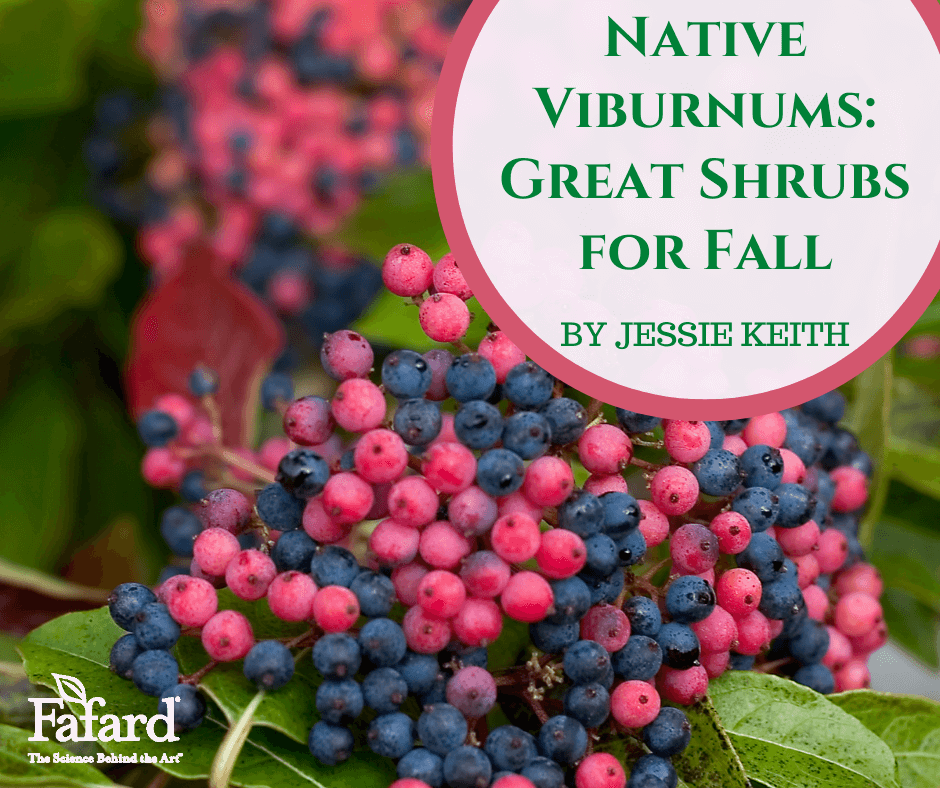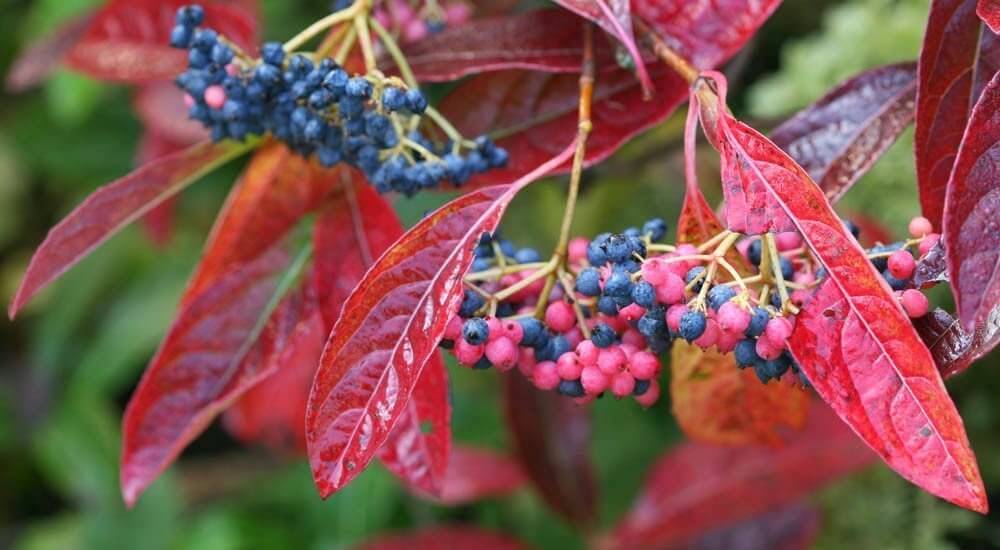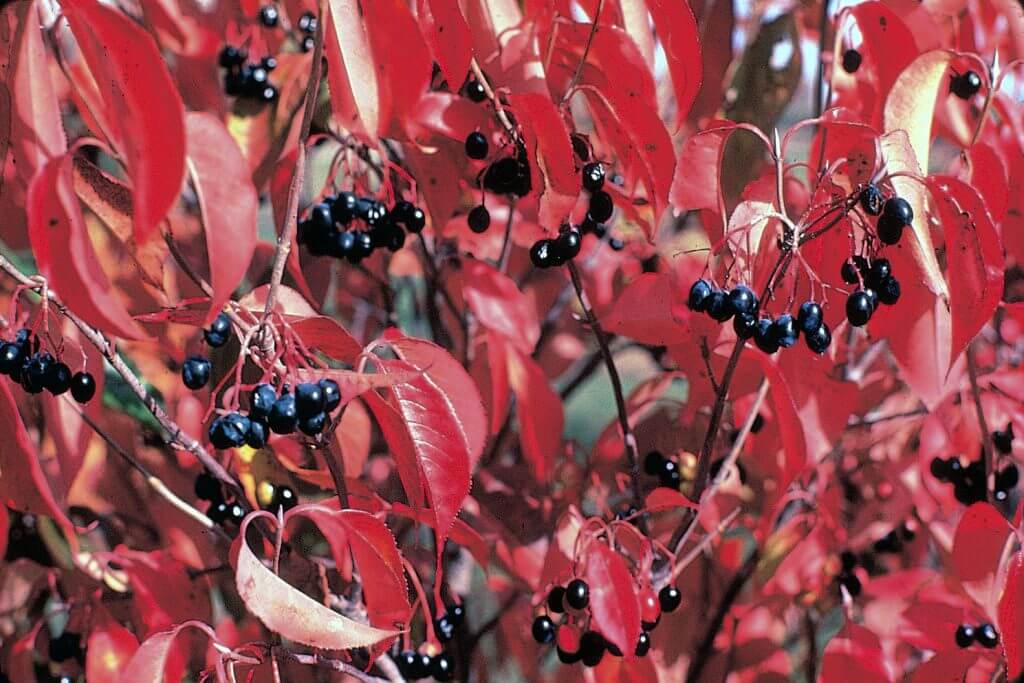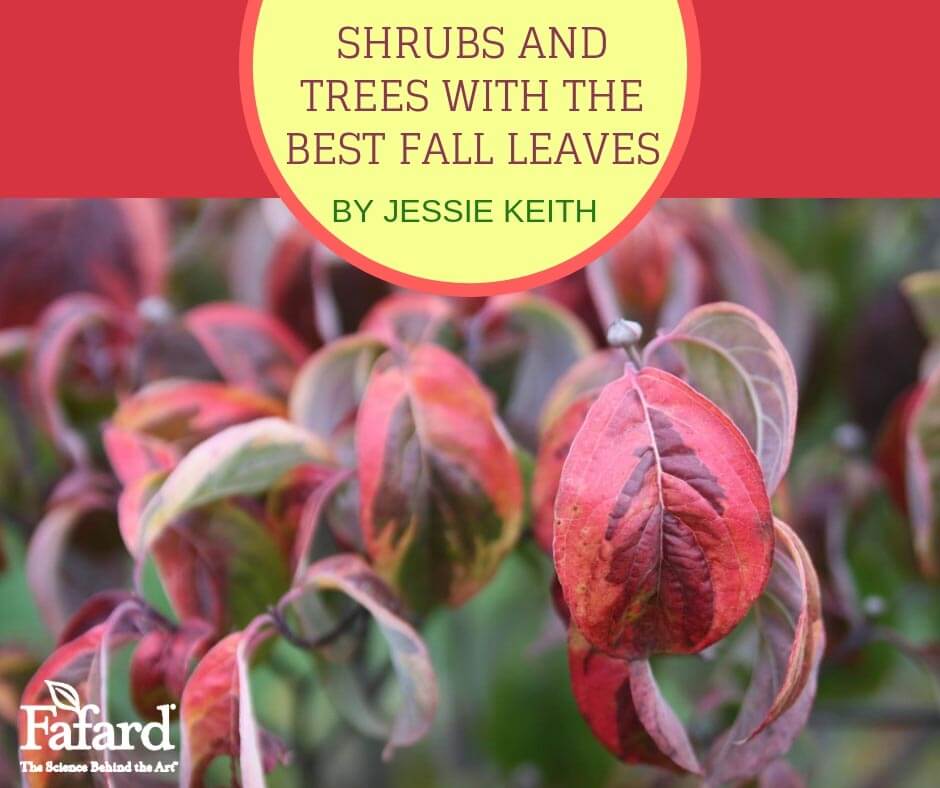
In spring they give us clusters of fragrant white flowers. In summer, their lush foliage and appealing habits take center stage, but fall is when native viburnums really perform. Their leaves turn glowing colors, and fruits of red, orange, yellow, or black, make a decorative statement before they are picked off by cardinals, finches, and waxwings. Some fruits may even be maintained into winter.
Native viburnums have a few more things in common. They are tough and resilient once established. Give them full sun, and well-drained, fertile soil amended with quality products like Fafard Premium Topsoil, and they will be happy. Average moisture will ensure the best flowering, fruiting, and fall color. Most are remarkably hardy. Bees and butterflies feed on the spring flowers, and all manner of wildlife enjoy the late-season fruits. Altogether, they are outstanding landscape shrubs that will not disappoint.
Arrowwood

Few shrubs are as tough as arrowwood (V. dentatum, Zones 3-8), an eastern native with a distribution that extends from New England down to Texas. Autumn Jazz® (10-12 feet) is a fall fireball with leaves of red, orange, and yellow. The somewhat shorter Blue Muffin® (5-7 feet) develops clusters of bright blue fruits and burgundy-red leaves at season’s end. Finally, Chicago Lustre® (8-12 feet) is especially tolerant of heat and drought, and its lustrous leaves turn shades of yellow, orange, and burgundy-red. If more than one shrub is planted for cross-pollination, the clusters of ivory spring flowers develop into blue-black fruits. The flowers are especially valued by bumblebees, and the caterpillars of the spring azure butterfly feed on the leaves.
Possumhaw

Native to the whole of eastern North America, possumhaw (Viburnum nudum, Zone 5-9) grows best in moist, loamy soils. Clusters of fragrant white flowers welcome spring. Through late summer and fall, the fruits turn from green to pink to blue-black. They are tart but edible when mature. The glossy dark green leaves turn shades of burgundy and dark red. Brandywine™ (5-7 feet) is one of the best varieties for a fantastic display of fruit and reliable burgundy leaf color. Plant more than one shrub to ensure a fruit display.
American Cranberrybush

Few shrubs are as beautiful as a fully fruited American Cranberrybush (V. opulus var. americanum (Syn. Viburnum trilobum), Zones 2-7 ) in fall. Birds cannot get enough of the drooping red fruits, and the maple-like leaves glow in the sun like embers. Its leaves are also important to spring azure butterfly caterpillars. A mature specimen can reach between 8 and 12 feet, so give it plenty of space.
Nannyberry

Nannyberry (V. lentago, Zones 2-8) is the largest of the viburnums mentioned and grows more like a small tree than a shrub. Fully mature specimens can reach up to 20 feet and tolerate moister soils than most. Natural populations extend far up into Canada, making it an unusually hardy plant. Its clusters of ivory flowers appear in mid to late spring. Black fruits and bright red or orange leaves comprise its fall show. The caterpillars of the spring azure butterfly feed on its leaves, and the sweet fruits are edible to humans as well as wildlife.
Any of these exceptional shrubs will enliven your garden’s show, especially in fall and winter. Their high wildlife value will also draw more bees, butterflies, and birds to your yard.






